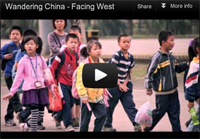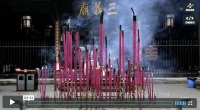Sunday marked the end of the Shanghai Expo, and I had the chance to watch some of it on TV. More money was spent on the Expo than the Olympic Games, and the media representation was top notch. I have heard much internal criticisms about how it reeks of elitism and favoritism (especially from popular Chinese blogger Han Han) toward the rich and powerful, but having being part of the everyday Chinese flock to visit the Expo and what it had to offer – I can bear testimony that many ordinary Chinese minds were emancipated as a result. Beyond them benefitting from China’s economic progress, this expo would also have alleviated their minds in giving them an opportunity to them see, appreciate, and learn how to work with the wider world; that there is a larger picture outside the great wall.
There is always a give and take element to events of such magnitude, and perhaps the net gain should be the focus. I am sure more bridges were built than broken. It is a tantamount task to please 73 million visitors. The first Expo to be held in a ‘developing’ country (China continues to play this card close to the chest), I guess it was no surprise a PR spiel such as this – ‘The gala is eyed in China as another event of national splendor after the 2008 Beijing Olympic Games showcased China’s status as an economic and political power to the world’ was reinforced. China’s charm offensive and public diplomacy would have most certainly gained another powerful agent with this event.
– – –
China holds closing ceremony for Shanghai Expo
Xinhua
Source – China Daily, published October 31, 2010

Chinese Premier Wen Jiabao (3rd R) attends the closing ceremony of the Shanghai World Expo at the Expo Cultural Center in the World Expo Park in Shanghai, Oct 31, 2010. Photo - Xinhua
SHANGHAI – The 184-day Shanghai World Expo came to the end as a closing ceremony started here Sunday evening.
Chinese Premier Wen Jiabao and other dignitaries attended the ceremony.
Chinese Vice Premier Wang Qishan said the Expo has made China and the world come closer together, and a more open, inclusive and culturally advanced China that steadily moves forward will join other countries in the world to usher in an ever brighter future for all.
He said the Expo spirit will be carried forward from generation to generation. Read the rest of this entry »
Filed under: Beijing Consensus, Charm Offensive, China Daily, Communications, Culture, Education, Han Han, Influence, International Relations, Media, Nationalism, Politics, Public Diplomacy, Shanghai World Expo, Social, Soft Power, Strategy, The Chinese Identity, The construction of Chinese and Non-Chinese identities



























The Sharing Circle